Kusadasi
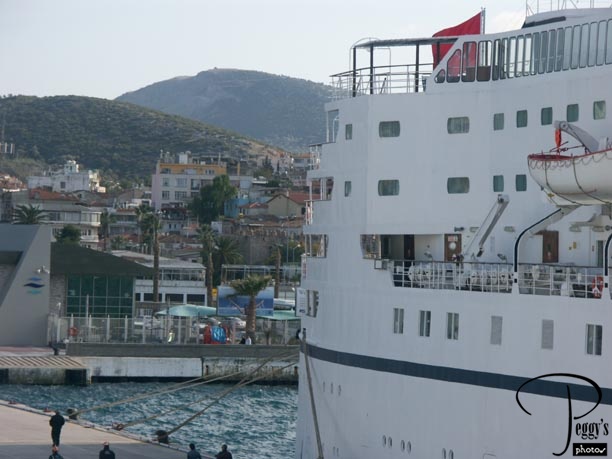
We arrived at the port of Kusadasi, Turkey, in the afternoon. We were again in Asia––the section of Asia referred to as Asia Minor. Kusadasi was founded by the Venetians in the 16th century. Today, it is a modern city and a busy port. Photo: Arriving in Kusadasi.

Kusadasi
Kusadasi
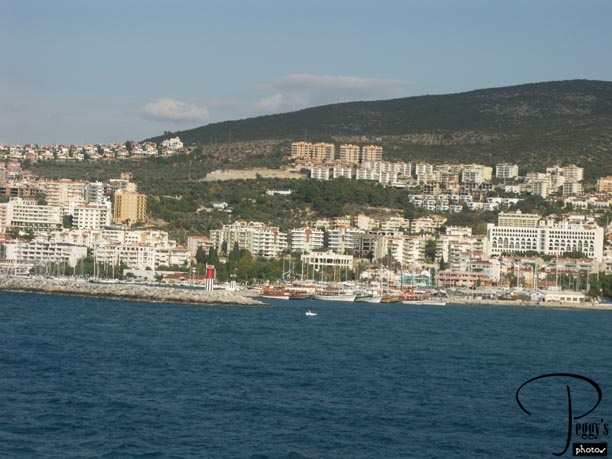
Another view of modern Kusadasi.

Kusadasi
Kusadasi
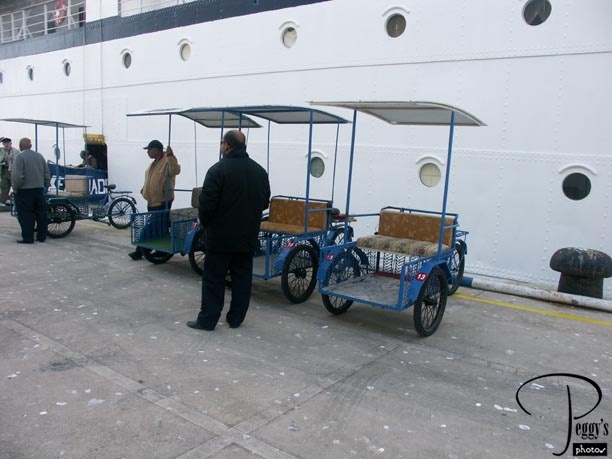
axis waiting to take us from the ship to the bus. I don’t think any of our group took one of them but we found out that it may have been a good idea. The walk from the ship to the bus was not overly long but there were speed bumps on the walk and it was easy to trip on them. Toby not only tripped on one of the bumps, she fell head first and ended up completely prone on the walkway and was hurt. A doctor was called, who surprisingly came within a very short time. Sabrina asked the rest of our group if we wanted to wait for Toby––we all easily said, yes of course. She was treated by the doctor and we were on our way, with a bit shaken–up Toby, after not too long of a time. We were going on an optional tour to both the House of the Virgin Mary and to Ancient Ephesus (49 euros).

Kusadasi
Kusadasi

Along the waterfront at Kusadasi.

Kusadasi
Kusadasi
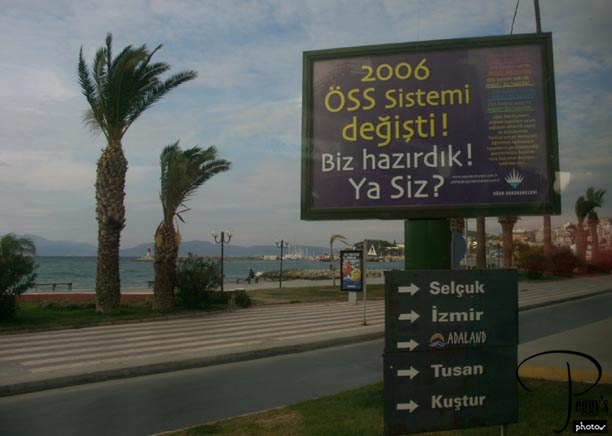
Farther along the waterfront.

Kusadasi
Kusadasi
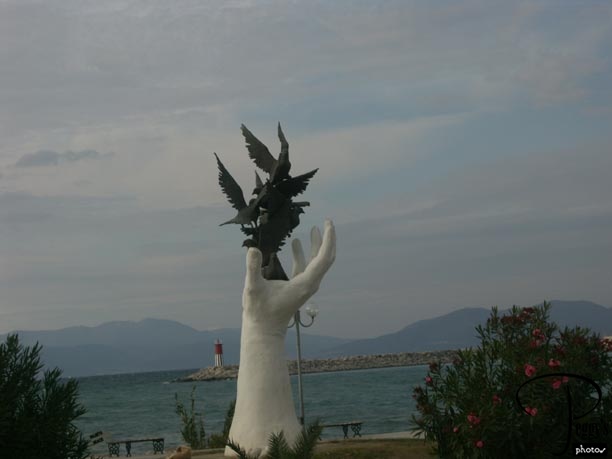
Interesting artwork along the waterfront.

Kusadasi
Kusadasi
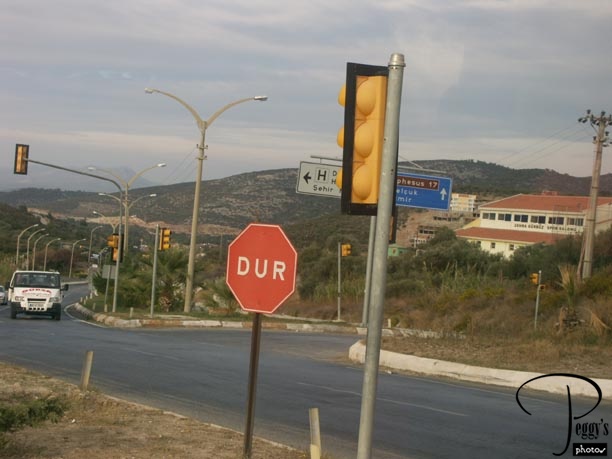
Dur (Stop) sign. Ephesus is 17 kilometers from here.

Kusadasi
Kusadasi
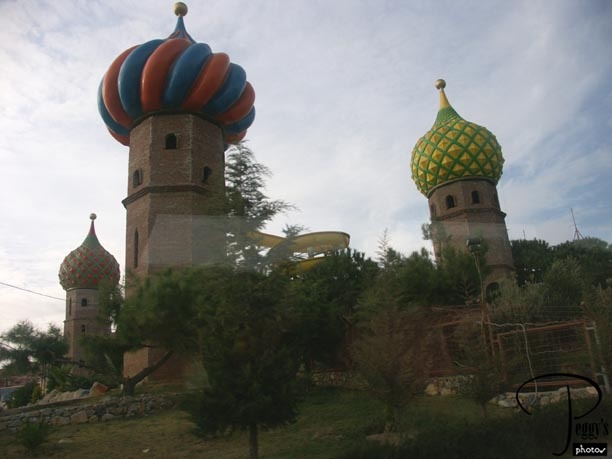
Turkish waterpark that we passed.

Kusadasi
Kusadasi
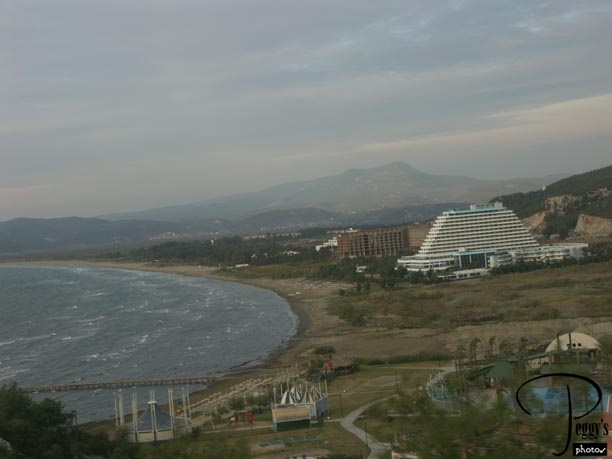
Modern hotels on the beach. Kusadasi is a major resort.

Kusadasi
Kusadasi
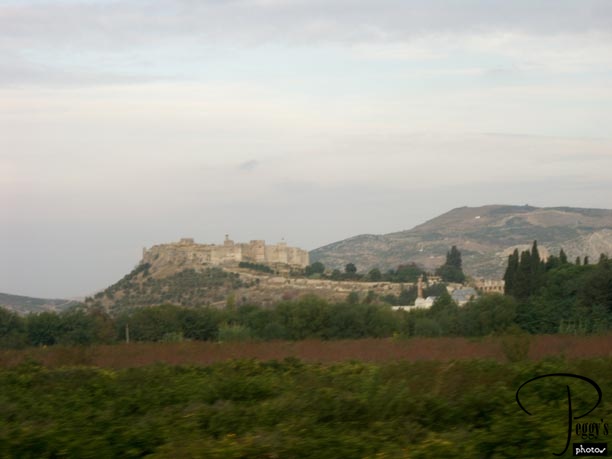
I don’t know if this is a castle or a medieval hill town on top of the hill. I can find no information on it. We did not visit it, but it looked very interesting.

Kusadasi
Kusadasi
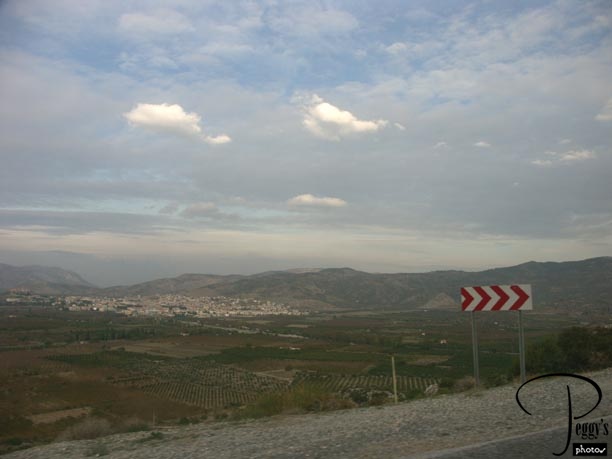
Going up the hill to the House of the Virgin Mary.

Kusadasi
Ephesus–The House of the Virgin Mary
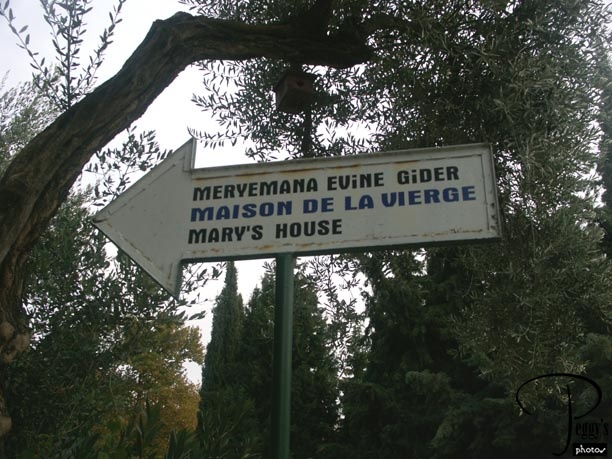
Sign pointing in the direction to Mary’s House. We had a local Turkish guide for our excursion. He was a Christian who told us that only Christian guides are allowed to take tourists to the House of the Virgin Mary.

Ephesus–The House of the Virgin Mary
Ephesus–The House of the Virgin Mary
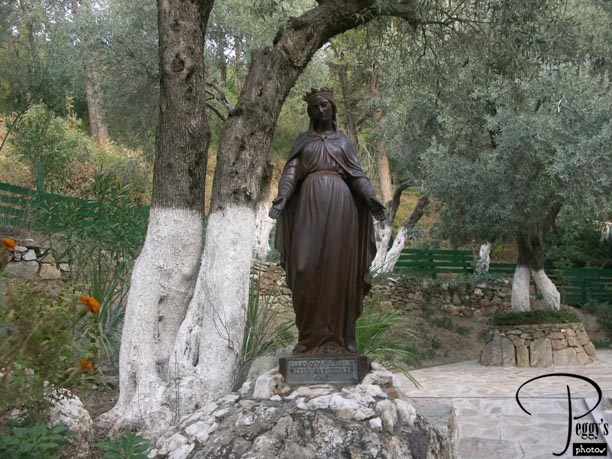
Statue of the Virgin Mary with outstretched, welcoming arms. The statue was found during early 19th century excavations.

Ephesus–The House of the Virgin Mary
Ephesus–The House of the Virgin Mary
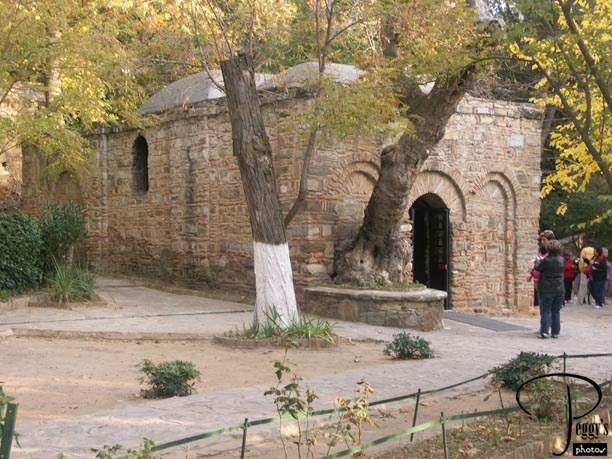
The House of the Virgin Mary, reconstructed on top of the original foundation. According to tradition (which means that it is believed to be so but has not been verified), this house is where the Virgin Mary spent her last days. Because of the persecution of Christians in Jersaleum, the Virgin Mary was taken to Ephesus by St. John the Apostle for her own safety (other sources say it was St. Paul who brought her here).

Ephesus–The House of the Virgin Mary
Ephesus–The House of the Virgin Mary
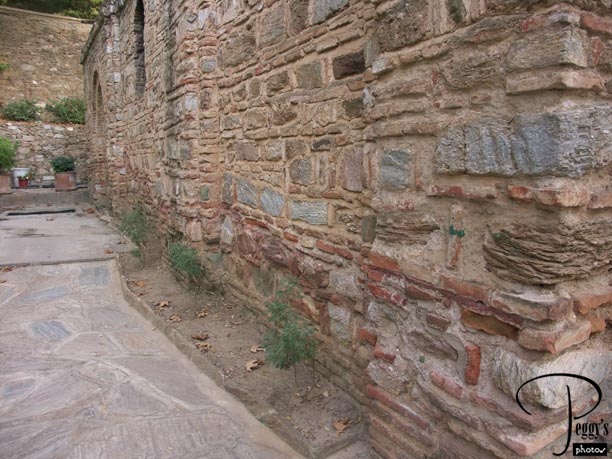
Only the red brick on the bottom is of the original house. The foundation was discovered in a most unusual way. A 19th century book entitled the “Life of the Blessed Virgin” reported the revelations of a nun in Germany who had never been to Ephesus or even outside Germany. She described the hills of Ephesus and the house where the Virgin Mary spent her last days. Two expeditions went to Ephesus and the foundation of the house was discovered exactly as described by the nun.

Ephesus–The House of the Virgin Mary
Ephesus–The House of the Virgin Mary
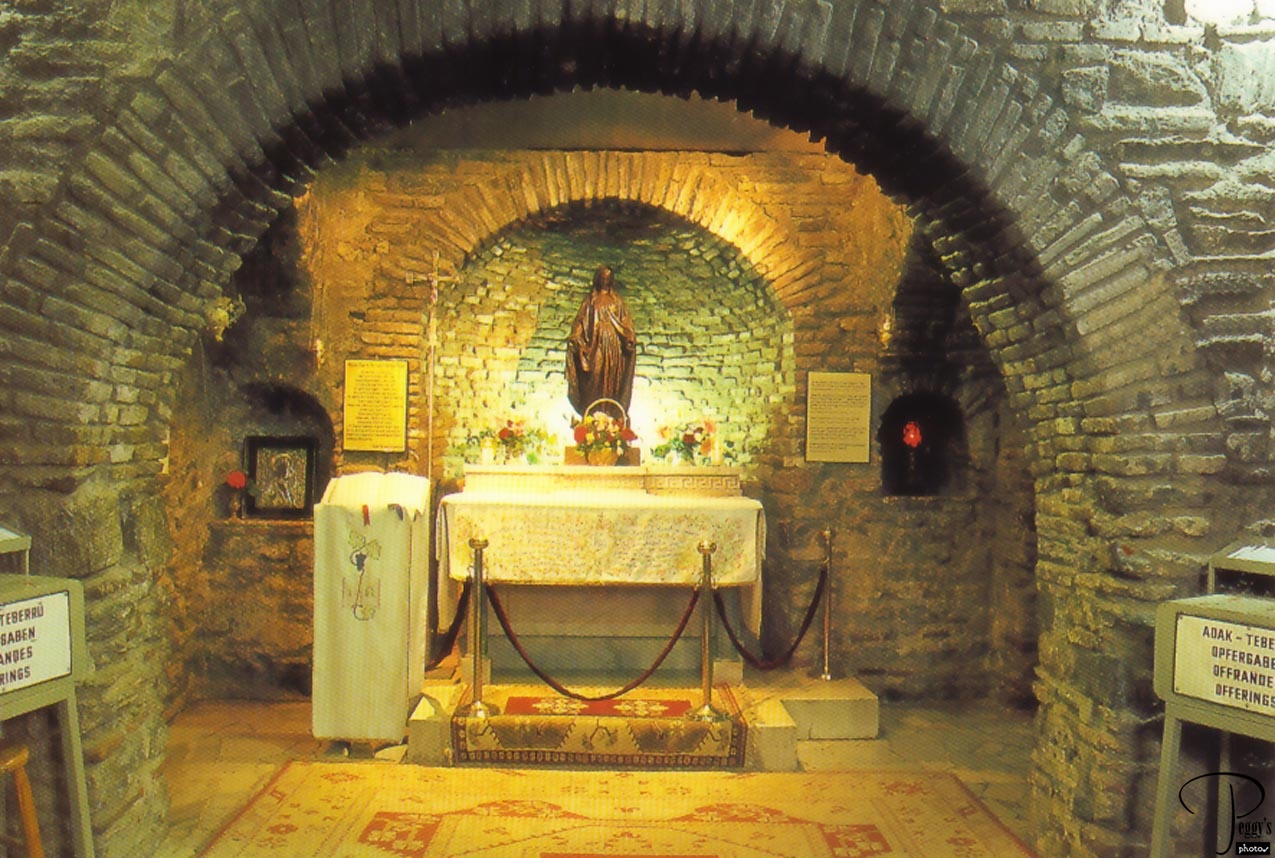
Additionally, in support that this was the House of the Virgin Mary is that local Christians have, since early times, made their way up this hill to celebrate the Dormition of the Virgin Mary. No photos were allowed inside the house, which is now a chapel. I scanned this photo of the chapel from a postcard.

Ephesus–The House of the Virgin Mary
Ephesus–The House of the Virgin Mary
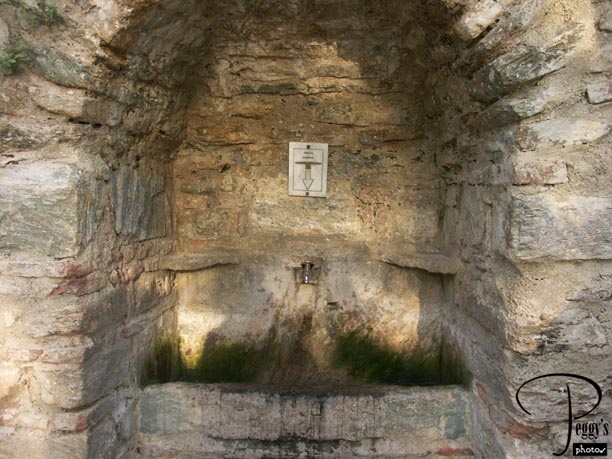
The Sacred Spring at the House of the Virgin Mary. Holy water from the spring could be bought in glass containers from the souvenir stand on the grounds (also, other religious items and Turkish souvenirs could be purchased). At this store, the tourists were mobbing the shopkeepers.

Ephesus–The House of the Virgin Mary
Ephesus–The House of the Virgin Mary
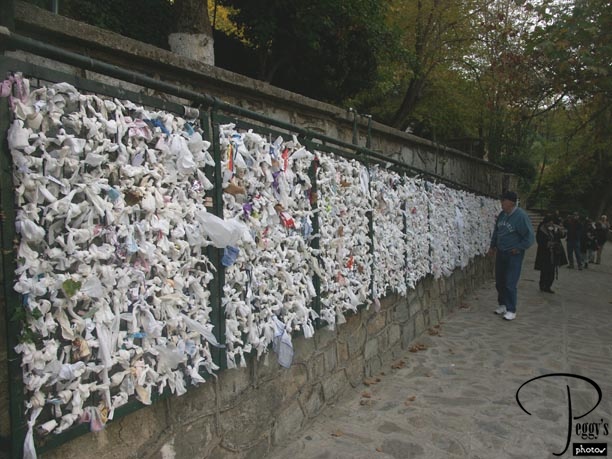
The wall near the Sacred Spring where people put their written prayers into the crevices.

Ephesus–The House of the Virgin Mary
Ephesus–The House of the Virgin Mary

Close–up of the wall.

Ephesus–The House of the Virgin Mary
Ancient Ephesus
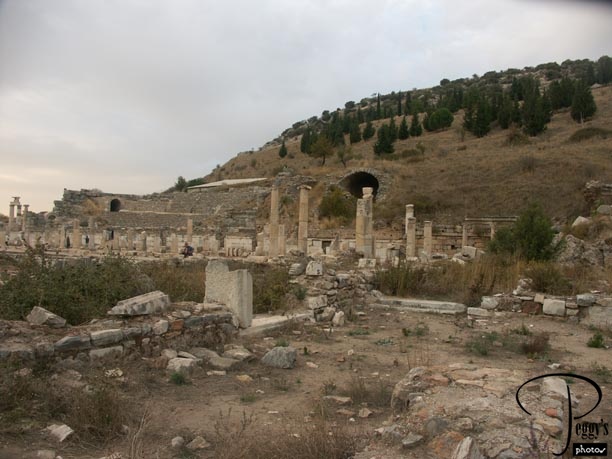
We drove down the hill to next visit Ancient Ephesus. This is the best–preserved classical city in the Mediterranean. In 129 B.C., the Romans were bequeathed the region by Attales, the King of Pergamon. It was a very important center of trade and commerce in Asia, as in ancient times it was located right on the sea, and it grew to be the second largest city in the Roman Empire. Ephesus was the center of the cult of Artemis, the goddess of the wilderness, the hunt and wild animals, and fertility. The Temple of Artemis in Ephesus was one of the Seven Wonders of the Ancient World. It is now in ruins.

Ancient Ephesus
Ancient Ephesus
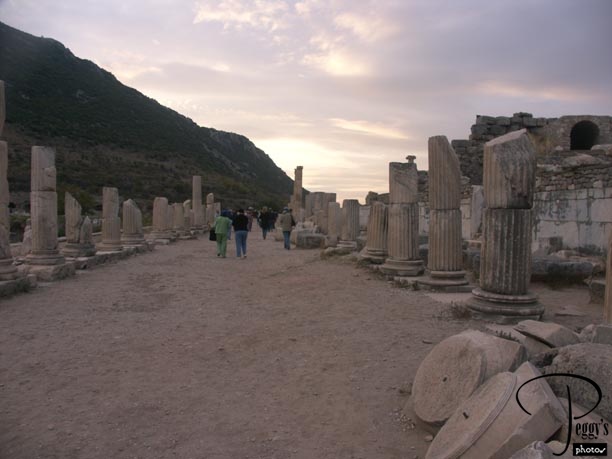
The main street of Ephesus––the Street of Curetes.

Ancient Ephesus
Ancient Ephesus
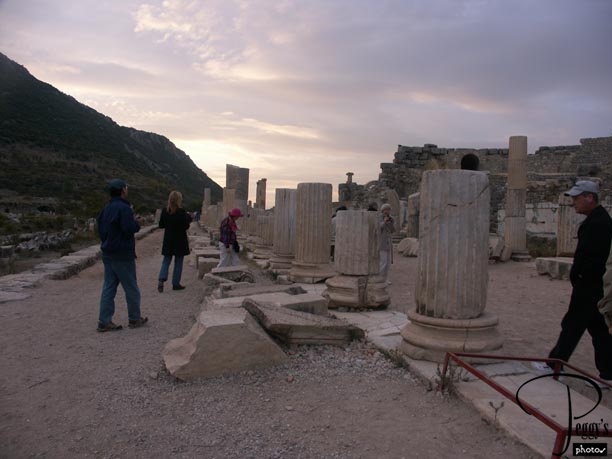
Inspecting the ruins.

Ancient Ephesus
Ancient Ephesus
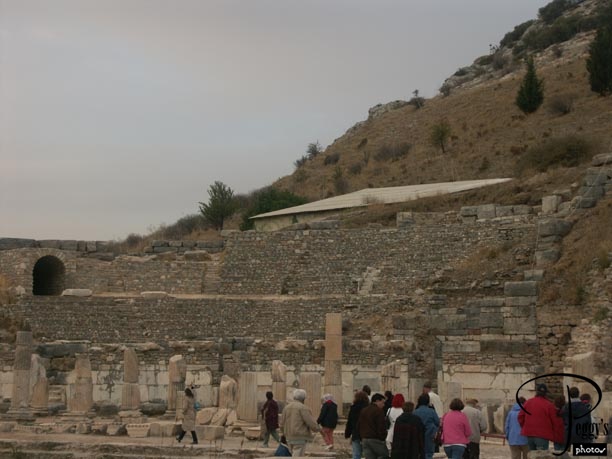
The Odeon––a small 2nd–century theatre.

Ancient Ephesus
Ancient Ephesus
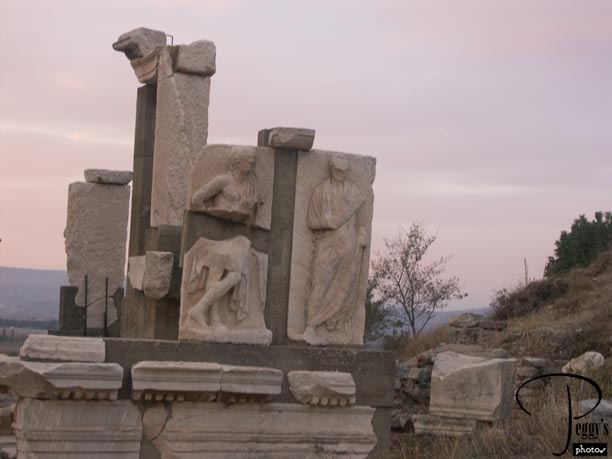
The Monument of Memmius. It was erected in 86 B.C. by the dictator Sulla as a symbol of Roman authority at Ephesus.

Ancient Ephesus
Ancient Ephesus
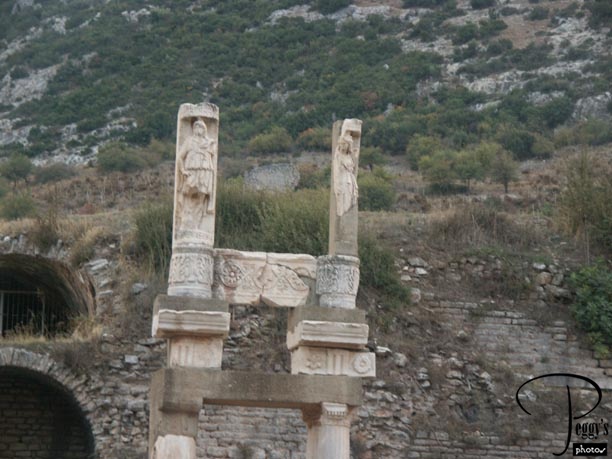
The Temple of the Domitian. It was one of the largest temples in the city.

Ancient Ephesus
Ancient Ephesus
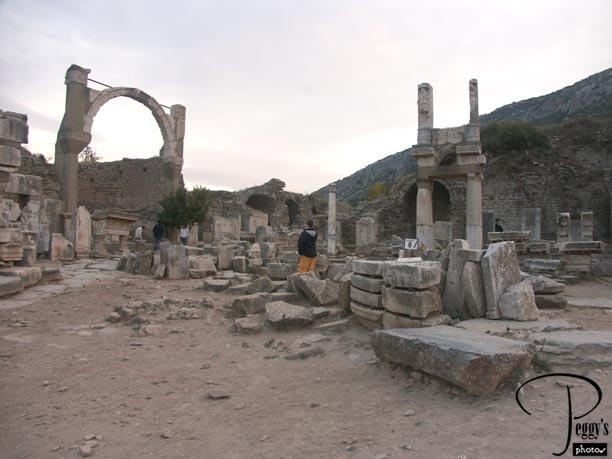
The Council House and the Fountain of Pollio on the left with the Temple of the Domitian on the right.

Ancient Ephesus
Ancient Ephesus
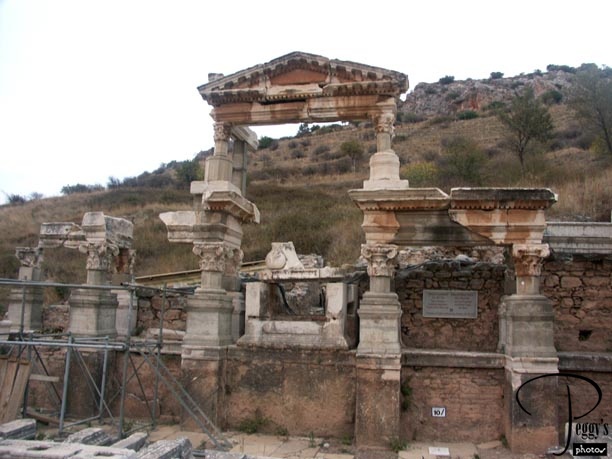
The Fountain of Trajan, 2nd century.

Ancient Ephesus
Ancient Ephesus
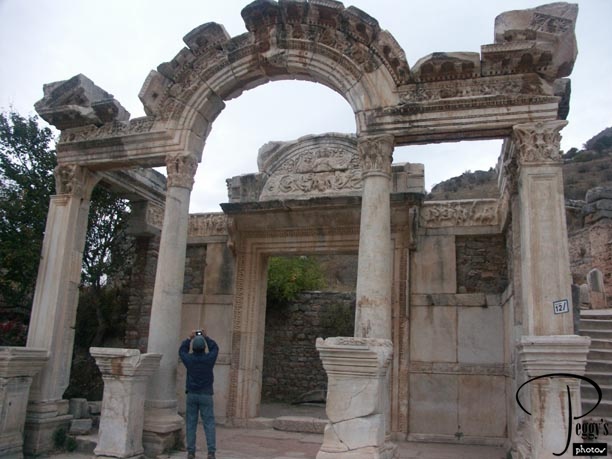
The Temple of Hadrian, a 2nd–century Corinthian temple.

Ancient Ephesus
Ancient Ephesus
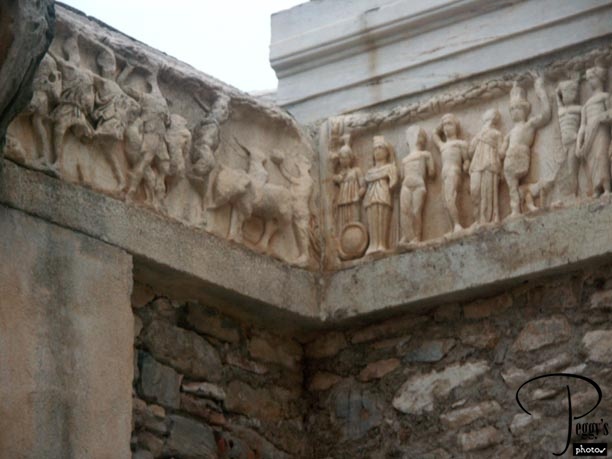
Relief on top of the Temple of Hadrian. The reliefs are plaster casts of the originals, with the originals in the museum of Ephesus.

Ancient Ephesus
Ancient Ephesus
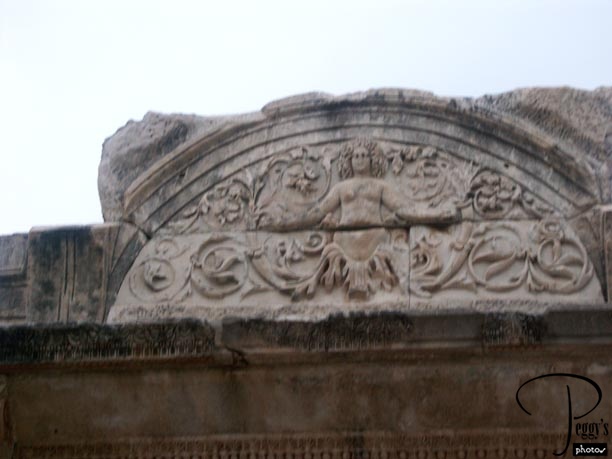
Another relief on the Temple of Hadrian.

Ancient Ephesus
Ancient Ephesus
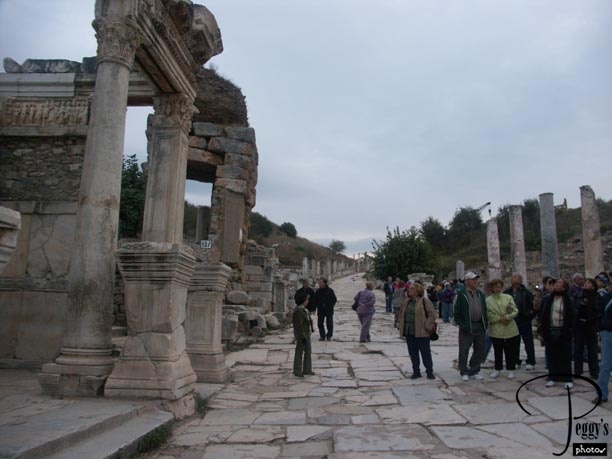
The Temple of Hadrian, a 2nd–century Corinthian temple.

Ancient Ephesus
Ancient Ephesus
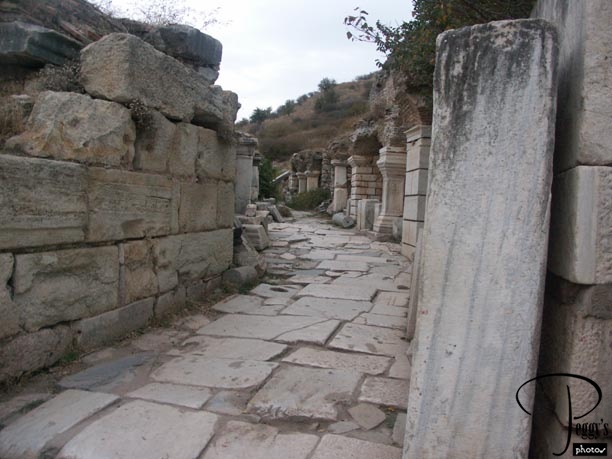
Side street off the Street of Curetes.

Ancient Ephesus
Ancient Ephesus
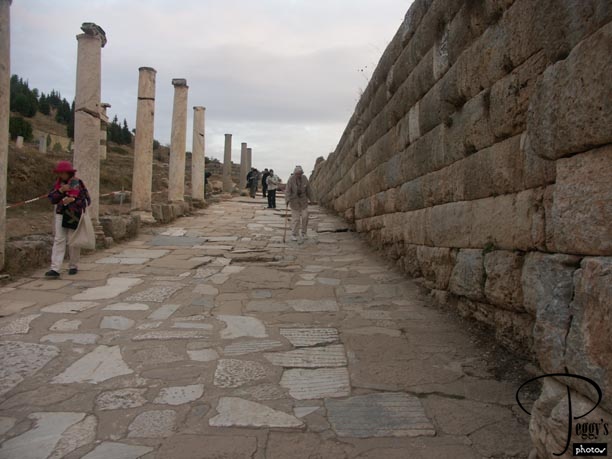
Gene and Bessie, our 85–year–old tour companions on the Street of Curetes. They have been friends since their college days at the University of California, Santa Barbara. They were delightful.

Ancient Ephesus
Ancient Ephesus
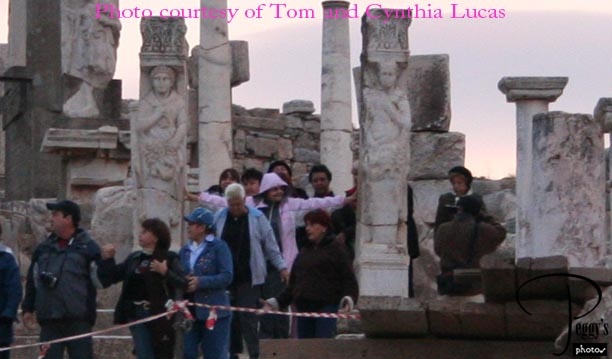
The Gates of Heracles, from the end of the 4th or beginning of the 5th century. This is a cropped photo of one taken by Tom and Cindy Lucas.

Ancient Ephesus
Ancient Ephesus
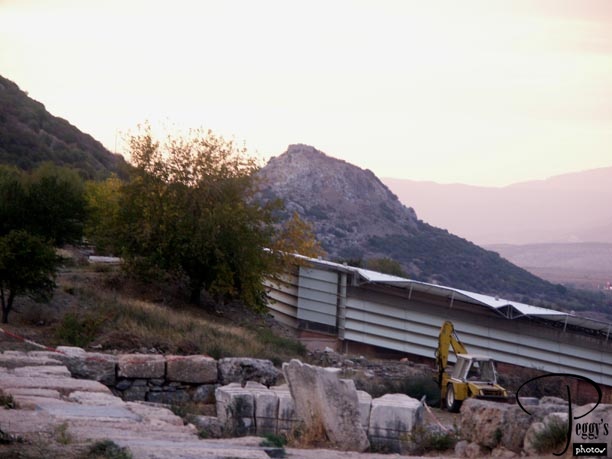
Seen from the Street of Curetes, the hill on which St. Paul was imprisoned. St. Paul was in Ephesus from 65 to 68 A.D. He preached here that there was one God and that “God had no need of a house made with human hands and that He was present in all places at all times.” What he was preaching made him very unpopular with the craftsmen who had become wealthy producing gold and silver statues of the goddess Artemis. A silversmith named Demetrius stirred up the populace, who then booed and stoned St. Paul. Later, St. Paul was imprisoned for his preaching. St. John the Apostle also came to Ephesus after his banishment to the island of Patmos. He died here at the age of about 99 in 100 A.D.

Ancient Ephesus
Ancient Ephesus
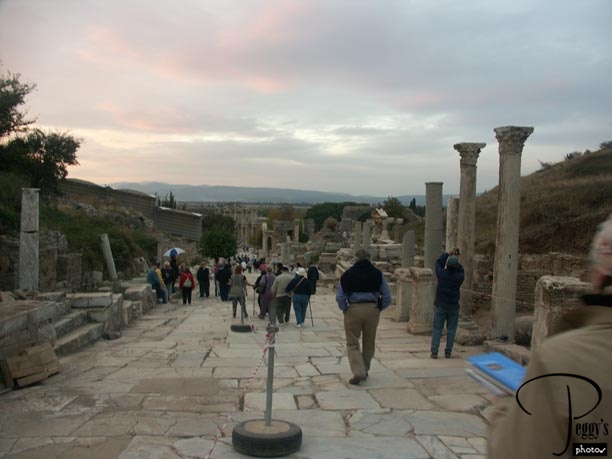
Walking down the Street of Curetes to the Library of Celsus.

Ancient Ephesus
Ancient Ephesus
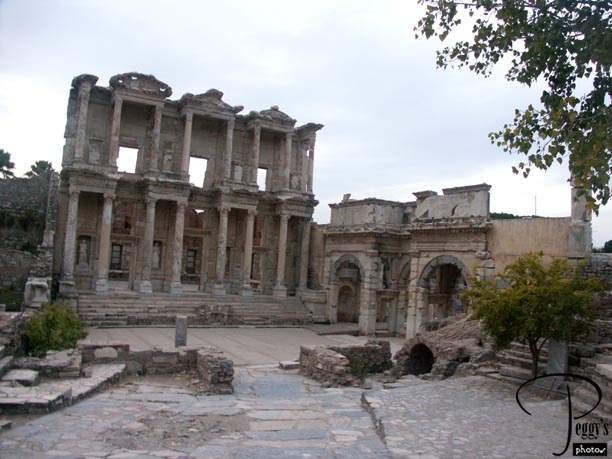
The Library of Celsus. Celsus was a governor of Ephesus. Upon his death, his son erected this library over his father’s tomb––2nd century.

Ancient Ephesus
Ancient Ephesus
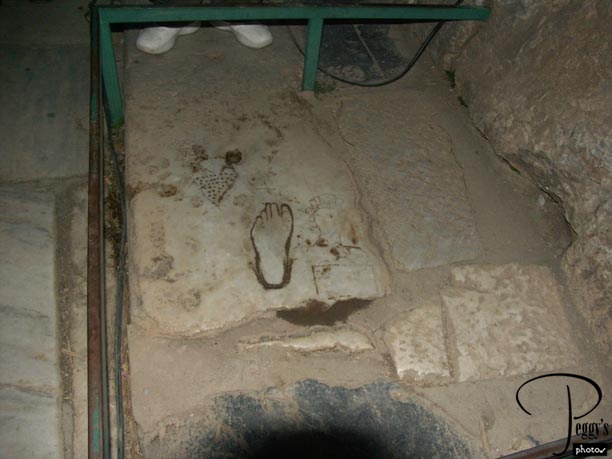
Sign to the Brothel. The Brothel was located across from the library. The drawings of the heart and a woman indicated that a brothel was nearby. The foot showed its direction.

Ancient Ephesus
Ancient Ephesus
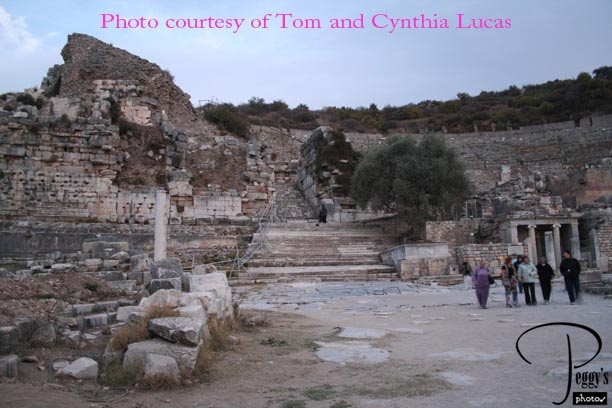
The Great Theatre. It was one of the largest theatres in the Aegean, holding 25,000 people. This photo is by Tom and Cindy Lucas. By the time I got to the theatre, it was too dark to take a good photo.

Ancient Ephesus
Ancient Ephesus
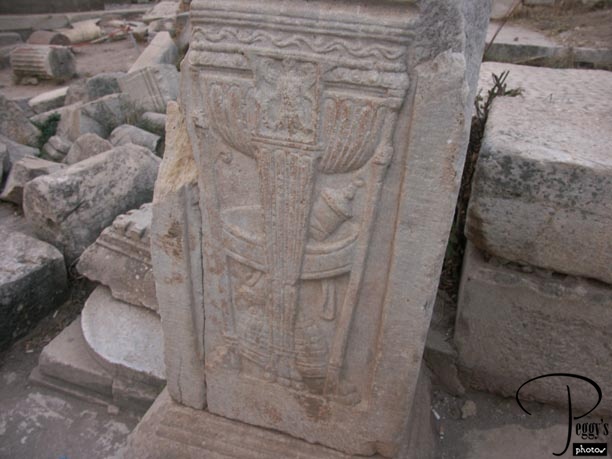
Some other intesting items at Ephesus: pharmacy symbol on a rock.

Ancient Ephesus
Ancient Ephesus
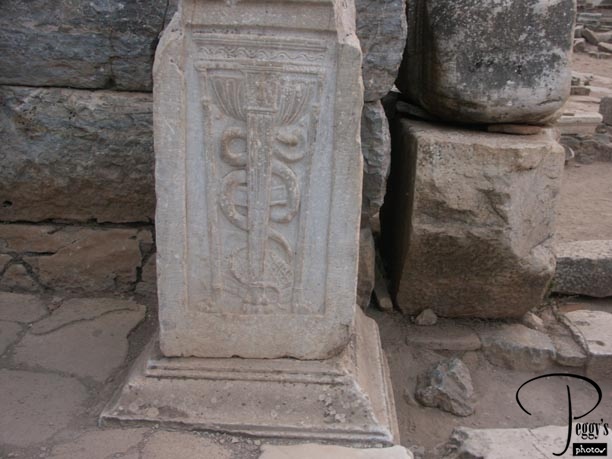
Medicine symbol on a rock.

Ancient Ephesus
Ancient Ephesus
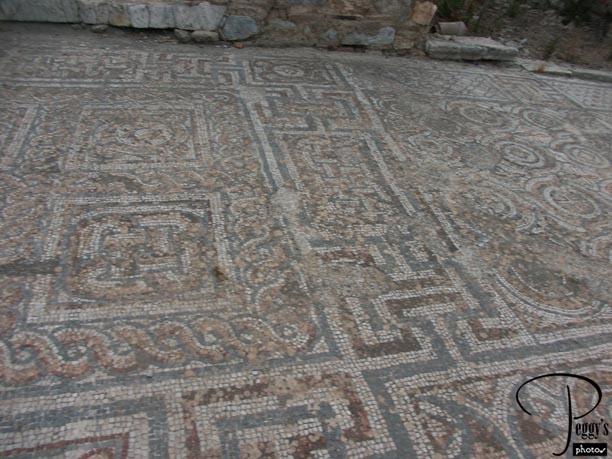
Mosaic floor.

Ancient Ephesus
Ancient Ephesus
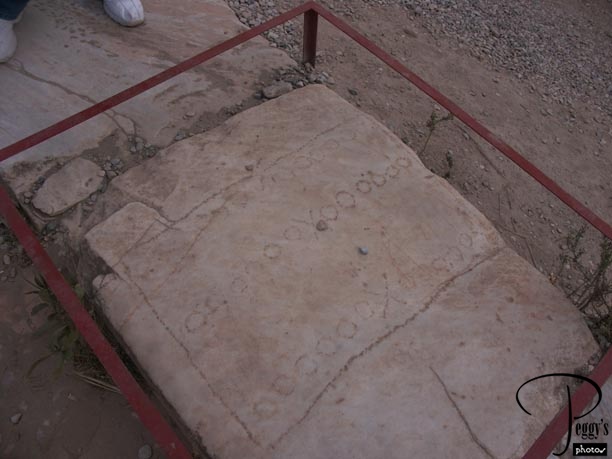
“0’s” and “X’s” on a rock. Ephesus was abandoned in the 6th century as its harbor had silted up, no longer allowing it to be used as a port. Ephesus is now several miles from the sea.

Ancient Ephesus
Ancient Ephesus
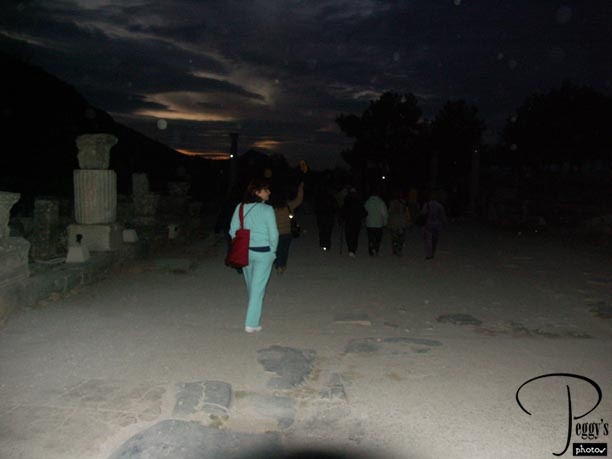
We saw as much as we could at Ephesus until it was too dark to see. But to reach our bus, we first had to run through a gauntlet of souvenir sellers who, again, would not take no for an answer. We were driven back to Kusadasi.

Ancient Ephesus
Kusadasi
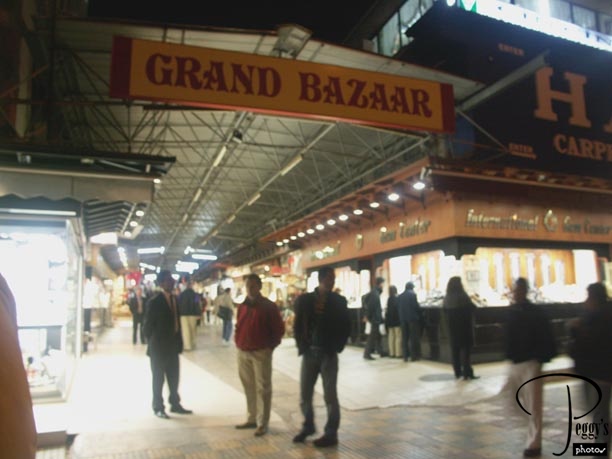
There was a Grand Bazaar near where our ship was docked. Here, we were only a bit pressured by the shopkeepers to buy and it was fun just to walk around to see what was for sale.

Kusadasi
Kusadasi
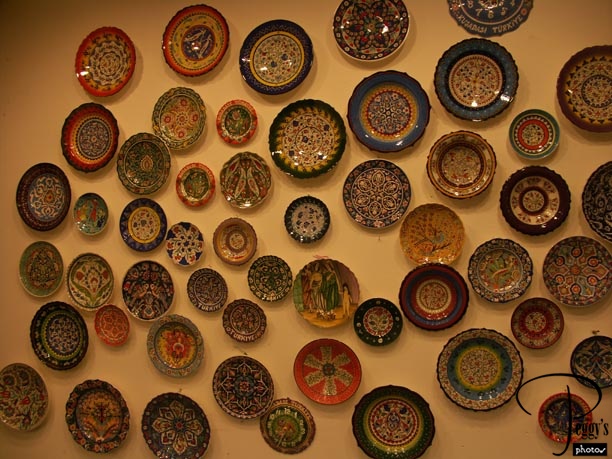
Pottery.

Kusadasi
Kusadasi
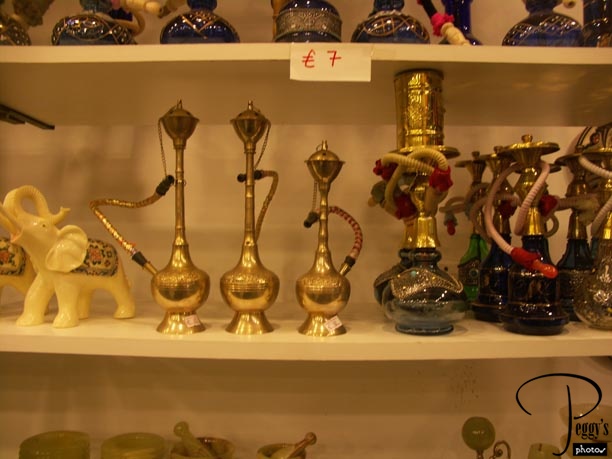
Turkish water pipes.

Kusadasi
Kusadasi

Turkish hats.

Kusadasi
Kusadasi
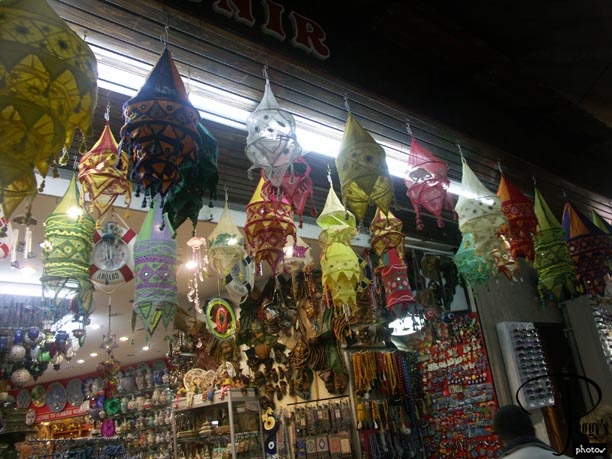
Pottery, scarves, and Turkish apple tea. We were served apple tea at the rug store in Istanbul. I didn’t care for it, but most of my tour group raved about it and some bought the tea to bring home with them. I bought Turkish Delight, a most delicious candy.

Kusadasi
Kusadasi
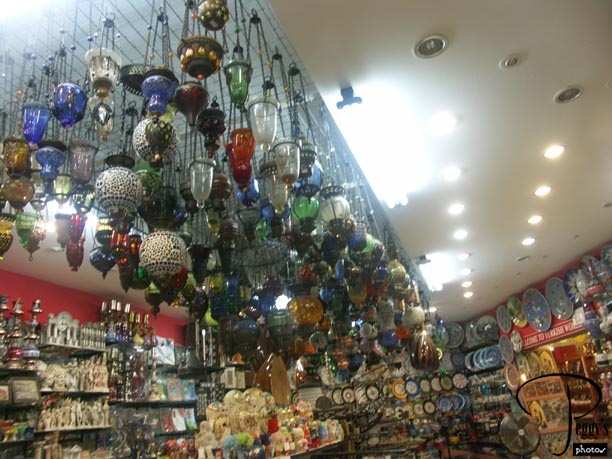
Farther inside the store.

Kusadasi
Kusadasi
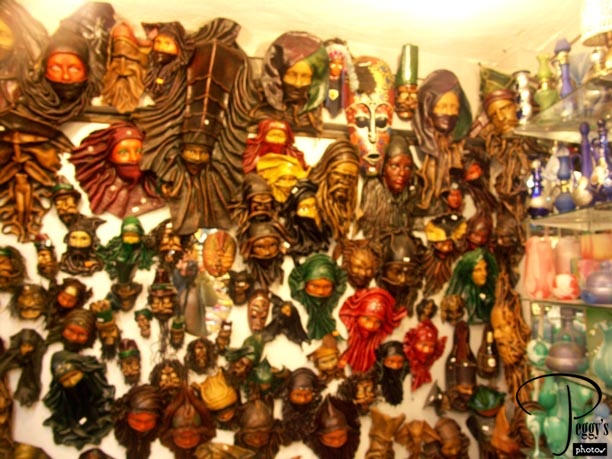
On a wall.

Kusadasi
Kusadasi
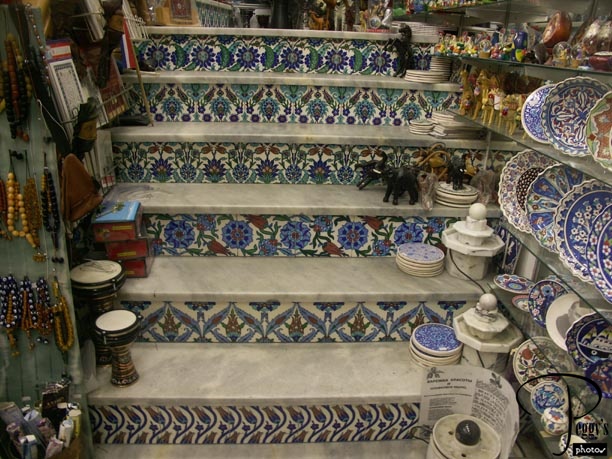
Beautiful tiled stairs in a store at the Grand Bazaar. It was time to head back to our ship. We sailed overnight to the Greek island of Rhodes.
